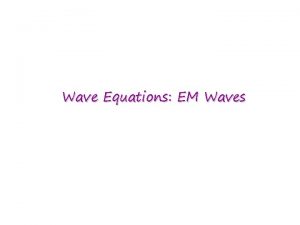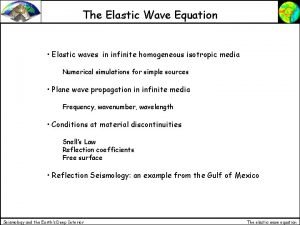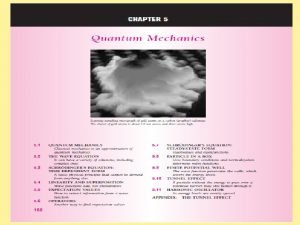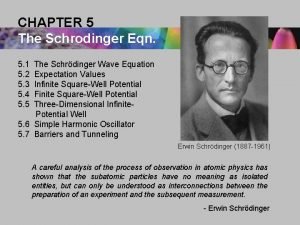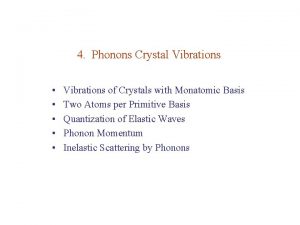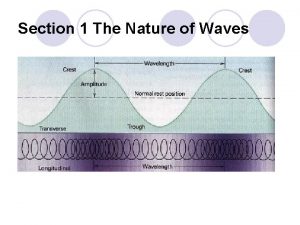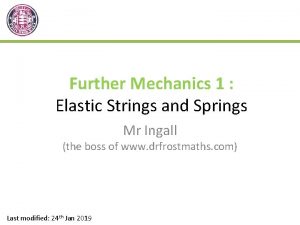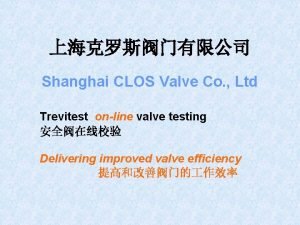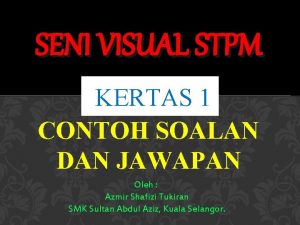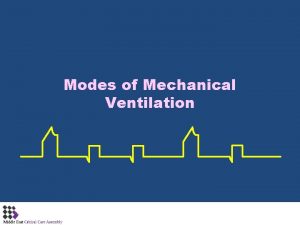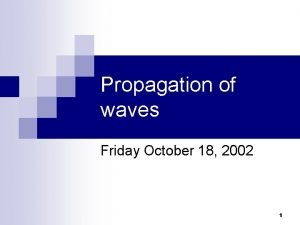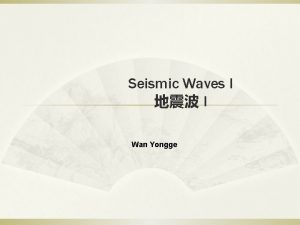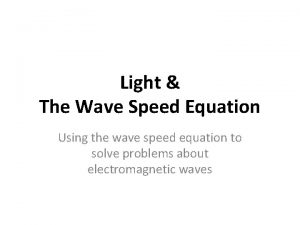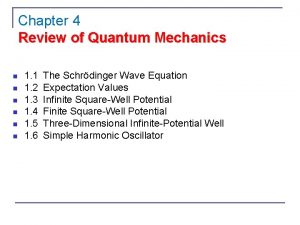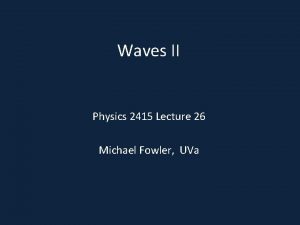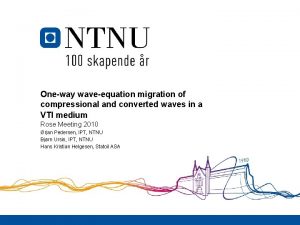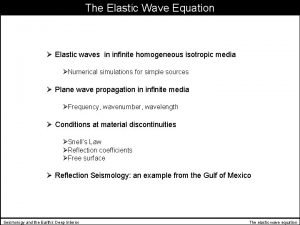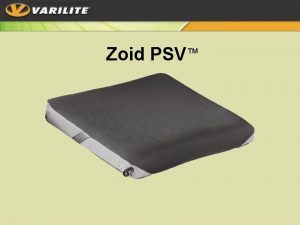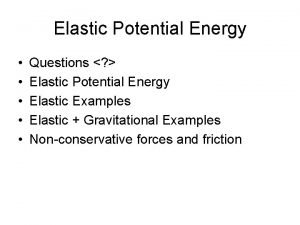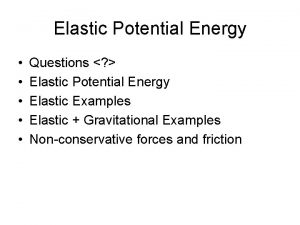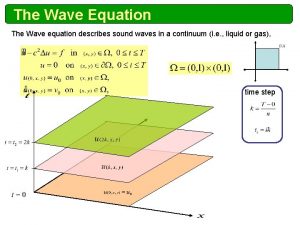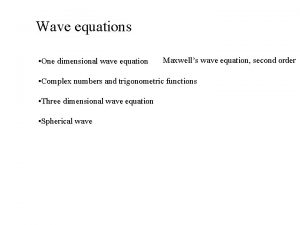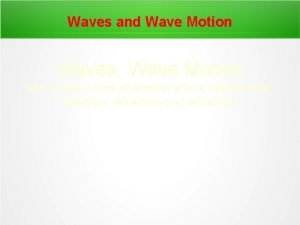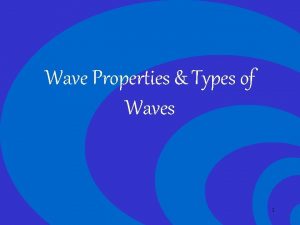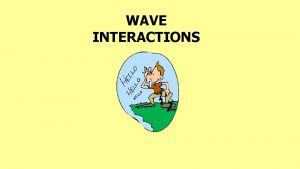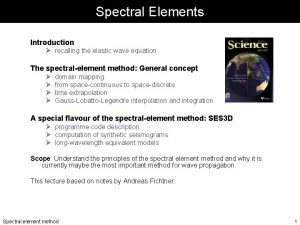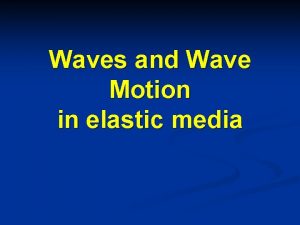PSV Waves and Solution to Elastic Wave Equation












































- Slides: 44

P-SV Waves and Solution to Elastic Wave Equation for a ½ Space and 2 -Layer Medium and Reflection Coefficients

Outline • ½ Space • Rayleigh waves • Love waves • 2 -Layer medium

½ Space Solution to Elastic Wave Equation Sin a. P /V = sin a. PS/V P P PS a PS PP PS = sin a /V PP P Boundary Tractions @ z=0: TP + TPS =(tzx , t 0 zy , tzz )=(0, 0, 0) 2 unknowns, 2 eqns constraint -> Rpp, Rps (reflec. coeffs) (d. F/dx, 0, d. F/z) Step 1. Express P displacements as f potentials: (u, 0, w)= (df /dx, 0, df/dz) Step 2. Express P stress as f potentials: tzx = m(du/dz+dw/dx) = 2 m d 2 f /dzdx Hooke’s law tzx =2 mezx tzz = l(du/dx+dw/dz) +2 mdw/dztzz== l(d 2 f / dx 2 + d 2 f / dz 2) + 2 m d 2 f /dz 2 Hooke’s law tzz =le+2 mezz TP + TPP = (md 2 f / dxdz, 0, l(d 2 f / dx 2 + d 2 f / dz 2) + 2 m d 2 f /dz 2 )

½ Space Solution to Elastic Wave Equation Sin a. P /V = sin a. PS/V P P PS a PP PS = sin a /V PP P Boundary Tractions @ z=0: TP + TPS =(tzx , tzy , tzz )=(0, 0, 0) 2 unknowns, 2 eqns constraint -> Rpp, Rps Step 3. Express PS displacements as Y potentials: (u, 0, w)= (d. Y / dz, 0, -d. Y /dx) 2 Y 2, 0, -(m (d/ 2 dx X 2 /dz - /dz d 2 X /dxd 22 Y), /dxdz) ? ) Step 4. Express PS stress as Y potentials: TPS = -(d – d 22 Y incident P + reflected PP : reflected PS Step 5. F = ei(x. Kx+z. Kz-w t) + Rpp ei(x. Kx-z. Kz-w t) : Y = RPS ei(x. Kx-z. Kz-wt) Boundary Tractions @ z=0: TP + TPS =(tzx , tzy , tzz )=(0, 0, 0) Two eqns, two unknowns

½ Space Solution to Elastic Wave Equation Sin a. P /V = sin a. PS/V P P PS = sin a /V PP S a P SP a SS PP PS Only with incident S at critical angle a do we get horiz. Traveling Rayleigh waves incident S + reflected SS : reflected SP i(x. Kx-z. Kz-w t) : Y = R i(x. Kx-z. Kz-wt) Step 5. F = ei(x. Kx+z. Kz-w t) + RSS pp e PS e SP kz = sqrt(w 2/cp 2 - kx 2 ) if kx < w /cp “i*ikzz= -kz z ” causes attenuation in depth so Rayleigh waves only propagate along surface kz = i sqrt(kx 2 - w 2/cp 2 ) if kx > w /cp Rayleigh Waves propagate along surface and attenuate with depth at vel. 0. 92 cs

Outline • ½ Space • Rayleigh waves • Love waves • 2 -Layer medium

½ Space Solution to Elastic Wave Equation

Rayleigh Wave (R-Wave) Animation Deformation propagates. Particle motion consists of elliptical motions (generally retrograde elliptical) in the vertical plane and parallel to the direction of propagation. Amplitude decreases with depth. Material returns to its original shape after wave passes.

Retrograde ellipitical


Dan Russell animations – Rayleigh wave Note, amplitude diminishes With depth exponentially Animation courtesy of Dr. Dan Russell, Kettering University http: //www. kettering. edu/~drussell/demos. html

½ Space Solution to Elastic Wave Equation

½ Space Solution to Elastic Wave Equation

Outline • ½ Space • Rayleigh waves • Love waves • 2 -Layer medium

Love Wave (L-Wave) Animation Deformation propagates. Particle motion consists of alternating transverse motions. Particle motion is horizontal and perpendicular to the direction of propagation (transverse). To aid in seeing that the particle motion is purely horizontal, focus on the Y axis (red line) as the wave propagates through it. Amplitude decreases with depth. Material returns to its original shape after wave passes.

Love Waves Love waves, resulting from interacting SH waves in a layered medium § Love waves cannot exist in a half-space § Consider up-going & down-going SH-waves in layer and in the halfspace 16

Love Waves Love waves, resulting from interacting SH waves in a layered medium § As with Rayleigh waves, Love waves have to satisfy the conditions of (a) energy trapped near the interface (b) a traction-free surface

Love Waves Love waves, resulting from interacting SH waves in a layered medium § Combining the boundary conditions at the interface, we obtain § Dividing the 2 nd by the 1 st expression provides a particularly important equation: § This dispersion relation gives the apparent velocity cx as a function of kx or ω § Waves of different frequency (period) travel at different speed 18

Love Waves Love waves, resulting from interacting SH waves in a layered medium § Love waves occur because incoming waves (with some wavenumber kx) are “trapped” within the surface layer § Think about constructive interference between incoming and reflected waves § This happens only if the waves come in at the right angles of incidence (wavenumber kx), which thus constitute so called “modes” of the solution § Rewrite the Love-wave dispersion relation (DR) in terms of cx, kx, and ω § Because the square roots must be real, cx is bounded: β 1 < cx < β 2 19

Outline • ½ Space • Rayleigh waves • Love waves • 2 -Layer medium

Sin a /V = sin a /V P PP P S PS PP 4 unknowns, 4 eqns constraint -> Rpp, Rps, Tpp, Tps PS S




Case Histories for PP and PS Reflections



North Sea Gas Chimney

North Sea PP & PS

GOM PP/PS Sections

Reservoir Identification


GOM Sub-Salt PP/PS

Methane Case Histories for PP and PS Reflections










 Psv solution
Psv solution Elastic cartilage elastic fibers
Elastic cartilage elastic fibers Wave equation solution
Wave equation solution Reflection coefficient formula
Reflection coefficient formula Quantum wave equation
Quantum wave equation Time independent schrodinger equation
Time independent schrodinger equation Compare and contrast p waves and s waves using venn diagram
Compare and contrast p waves and s waves using venn diagram Vibrations of crystals with monatomic basis
Vibrations of crystals with monatomic basis Do electromagnetic waves require a medium
Do electromagnetic waves require a medium An example for mechanical wave
An example for mechanical wave Difference between electromagnetic waves and sound waves
Difference between electromagnetic waves and sound waves What is a semiconductor used for
What is a semiconductor used for Difference between matter waves and electromagnetic waves
Difference between matter waves and electromagnetic waves Mechanical and electromagnetic waves similarities
Mechanical and electromagnetic waves similarities Surface waves and body waves
Surface waves and body waves Mechanical waves and electromagnetic waves venn diagram
Mechanical waves and electromagnetic waves venn diagram Constructive
Constructive Ability of two or more waves to combine and form a new wave
Ability of two or more waves to combine and form a new wave Sound waves are mechanical waves true or false
Sound waves are mechanical waves true or false What type of waves are sound waves? *
What type of waves are sound waves? * Is echolocation transverse or longitudinal
Is echolocation transverse or longitudinal Mechanical waves vs electromagnetic waves
Mechanical waves vs electromagnetic waves Seismic waves are mechanical waves
Seismic waves are mechanical waves Elastic potential energy equation further maths
Elastic potential energy equation further maths Difference between full wave and half wave rectifier
Difference between full wave and half wave rectifier Compare and contrast transverse and longitudinal waves
Compare and contrast transverse and longitudinal waves Full wave rectifier ic
Full wave rectifier ic P and s wave chart
P and s wave chart Transverse wave and longitudinal wave example
Transverse wave and longitudinal wave example Seni spm kertas 2
Seni spm kertas 2 Site:slidetodoc.com
Site:slidetodoc.com Media konvensional maksud
Media konvensional maksud Psv mode in ventilator
Psv mode in ventilator Ideal solution and non ideal solution
Ideal solution and non ideal solution Define half wave rectifier
Define half wave rectifier Rectified sine wave fourier series
Rectified sine wave fourier series Longitudinal wave
Longitudinal wave Wave wave repeating
Wave wave repeating Fourier series symmetry
Fourier series symmetry Spherical waves equation
Spherical waves equation Velocity of waves formula
Velocity of waves formula Wave speed equation for light
Wave speed equation for light Normalize wave function e^ix
Normalize wave function e^ix What is a harmonic wave in physics
What is a harmonic wave in physics One way wave equation
One way wave equation


